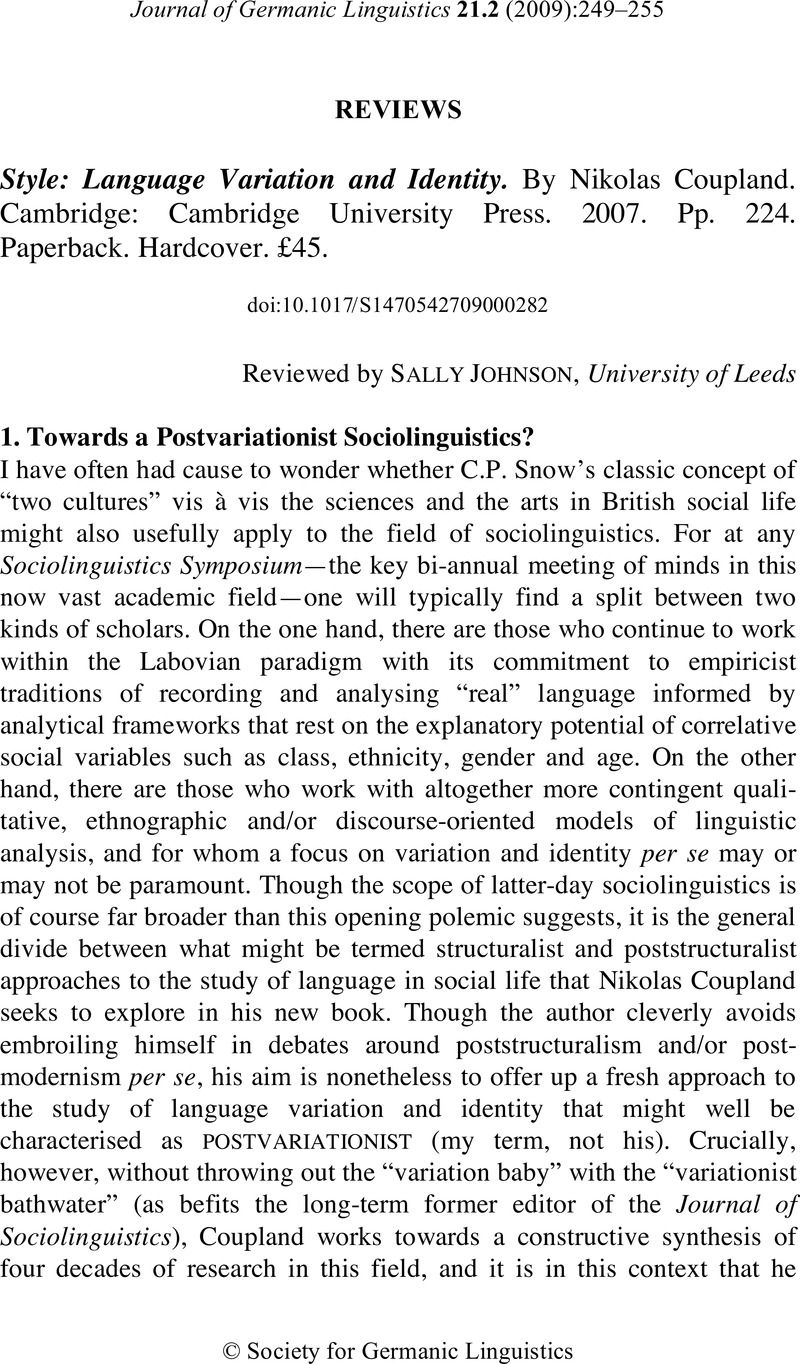No CrossRef data available.
Article contents
Style: Language Variation and Identity. By Nikolas Coupland. Cambridge: Cambridge University Press, 2007. Pp. 224. Paperback. Hardcover. £45.
Review products
Style: Language Variation and Identity. By Nikolas Coupland. Cambridge: Cambridge University Press, 2007. Pp. 224. Paperback. Hardcover. £45.
Published online by Cambridge University Press: 01 June 2009
Abstract
An abstract is not available for this content so a preview has been provided. Please use the Get access link above for information on how to access this content.

- Type
- REVIEWS
- Information
- Journal of Germanic Linguistics , Volume 21 , Issue 2: Special Issue in Honour of Martin Durrell , June 2009 , pp. 249 - 255
- Copyright
- Copyright © Society for Germanic Linguistics 2009
References
REFERENCES
Bakhtin, Mikhail. 1981. The dialogic imagination. Edited by Holquist, Michael & translated by Caryl Emerson & Michael Holquist. Austin: University of Texas Press.Google Scholar
Butler, Judith. 1997. Excitable speech: A politics of the performative. London: Routledge.Google Scholar
Coupland, Nikolas. 2003. Sociolinguistic authenticities. Journal of Sociolinguistics 7.417–431.Google Scholar
Giles, Howard, & Peter, Powesland. 1975. Speech style and social evaluation. London: Academic Press.Google Scholar
Hymes, Dell. 1974. Foundations in sociolinguistics. An ethnographic approach. Philadelphia: University of Pennsylvania Press.Google Scholar
Jaworski, Adam, Coupland, Nikolas, & Galasiński, Dariusz (eds.). 2004. Metalanguage: Social and ideological perspectives. Berlin: Mouton de Gruyter.CrossRefGoogle Scholar
Johnson, Sally, & Ensslin, Astrid (eds.). 2007. Language in the media: Representations, identities, ideologies. London: Continuum.Google Scholar
LePage, Robert B., & Andrée, Tabouret-Keller. 1985. Acts of identity: Creole-based approaches to language and ethnicity. Cambridge: Cambridge University Press.Google Scholar
Labov, William. 1966. The social stratification of English in New York City. Washington, DC: Center for Applied Linguistics.Google Scholar
Labov, William. 1972. Sociolinguistic patterns. Philadelphia, PA: University of Pennsylvania Press.Google Scholar
Lippi-Green, Rosina. 1997. English with an accent: Language, ideology, and discrimination in the United States. London: Routledge.Google Scholar
Stuart-Smith, Jane. 2005. Is TV a contributory factor in accent change in adolescents? Final Report to the Economic and Social Research Council. Grant No. R000239757.Google Scholar


